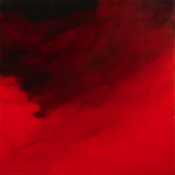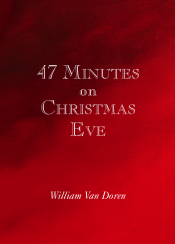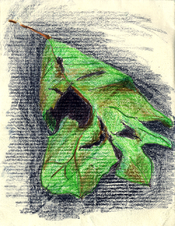Self-taught visionary artist. Painted every sunset for 11 years through 2016. Bio here. William Van Doren art also on Facebook and Instagram, and art prints on Pixels.com/Fine Art America. Author of the non-holiday book 47 Minutes on Christmas Eve. Coming in 2019, Into the Sunset: Paintings and Notes from 4,000 Nights.
VAN DOREN ON THE SUNSET SERIES
SUNSET SLIDESHOWS
Copyright © 2016 William Theodore Van Doren. All rights reserved. Reproduction in whole or in part without permission is prohibited.






Polyvision
Today we have Napoleon Bonaparte, Joan of Arc, and of course my friend Sarah Bruce. Then there’s the film director Abel Gance – and even the sunset. I just hope I can do this without injuring myself.
After I heard that today was the anniversary of the Battle of Waterloo, I found out that it’s also the date of an important victory, the Battle of Patay, by the army of Joan of Arc. (They say that the force under Joan’s immediate command wasn’t a major factor in the victory, but what I say is, if someone got burned at the stake at age 19, let’s be liberal with the plaudits.)
This sent me through a zig-zag series of ideas not worth mentioning here, but I wound up at Abel Gance’s 1927 silent epic Napoléon, a film I saw circa 1980 after it had been restored by Kevin Brownlow and sent by Francis Ford Coppola on a tour of concert halls, with a full live orchestra accompanying the show. There’s a scene where Napoleon spins the globe and in the earth he sees a vision of Josephine.
What, I wondered, if Napoleon had been able to team up with someone like Joan of Arc? (I know this is a little silly, but bear with me.) His tactical prowess could have benefited from her visions (plural).
Yes, that’s a lot like those hyped-up conversations where kids might imagine Albert Pujols batting against Satchel Paige, or a battle of the bands featuring a long-gone group and a new one, etc., etc. But then it brought me back to Gance again, and his ‘Polyvision’ technique, revolutionary at the time, basically a split screen – sometimes divided into three sections.
At times, as I recall (having seen it again perhaps six or so years ago, on tape), the polyvision effect involves a central image and then one other complementary image, doubled at the sides, i.e., flipped on one of the sides. Thus in what I think was the ultimate scene, Napoleon’s army is marching in a long shot at the center of the screen, with the imperial eagle flying above, and at each side is the same close shot of a marching column of troops, marching out from the center toward the left, and then from the center toward the right. It sounds rudimentary, but with the timing of the scene as a culmination, the tricolor tinting of the three panels – blue, white, red – the sheer mass of the army, and the eloquent flying of Napoleon’s symbolic eagle, it’s powerful.
A more sophisticated use of multiple images – I think the effect is at times double exposure – occurs earlier when a storm of debate is raging in the Convention and Napoleon, at the same time, is making his way back from exile at Elba, sailing over a stormy sea. I had understood at one time that Gance swung the camera on a rope to convey the turbulence of the Convention, and the scene plays the two storms against each other, and doubles them, overlaid.
Having come back to this scene, in a sense, by way of Joan of Arc, made me wish I could see all kinds of other simultaneous contrasts and overlays – further possibilities of this sort of layering.
Which brings us back to ‘crossing’ energy, from the post of June 15th.
To this I got a response from Sarah, titled ‘interesting misreading’:
I like it too. First, to get a so-called misreading is itself ‘crossing energy’ – one idea diverging from another. And for me it produced its own spark.
I realize I could have been clearer in the first place by saying “playing something for us like the sound of a bow drawn over a string.” But an arrow drawn across a bow, and bowstring – that’s a great image, because the energy – the speeding arrow – created by that particular perpendicular setup is so familiar and powerful.
So the sunset’s somehow a vector crossing over our deeply felt magnetic north orientation. On any one day, depending on the day and the person, it can seem like Time shot a flaming arrow – excuse the expression – across our bow.